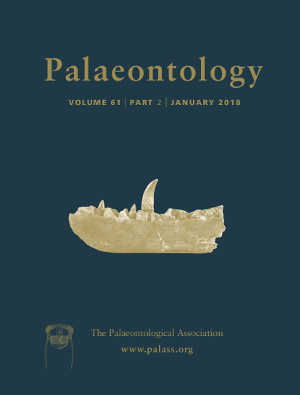Reg. Charity No. 1168330

We describe a recently discovered trace fossil from a eurypterid Konservat‐Lagerstätte in the upper Silurian Tonoloway Formation of Pennsylvania, and formally describe contemporaneous traces from the Williamsville Formation Lagerstätte of Ontario. The traces from both localities are assigned here to Arcuites bertiensis igen. et isp. nov. Based on comparisons with previously described eurypterid trackways, neoichnological experiments, and the co‐occurrence with eurypterid remains, Arcuites is interpreted as having been made by the swimming leg (sixth prosomal appendage) of swimming juvenile to adult eurypteroid eurypterids, and represents the first unambiguous trace fossil evidence for eurypterid swimming behaviour. The morphology of Arcuites indicates that eurypteroid eurypterids swam using drag‐based rowing, whereby the animal propelled itself forward by moving its oar blade‐like swimming paddles in an in‐phase backstroke. Arcuites morphology also indicates that the eurypteroid swimming appendage had a greater degree of movement than was previously suggested, and a revised rowing model is proposed. Differences in the abundance of A. bertiensis in the Tonoloway and Williamsville formations suggest a bathymetric control on eurypterid swimming behaviour and trace production. The association of Arcuites with eurypterid body fossils in both units indicates that these Lagerstätten were autochthonous assemblages and provides additional evidence for eurypterid inhabitation of shallow subtidal marine environments in the late Silurian.